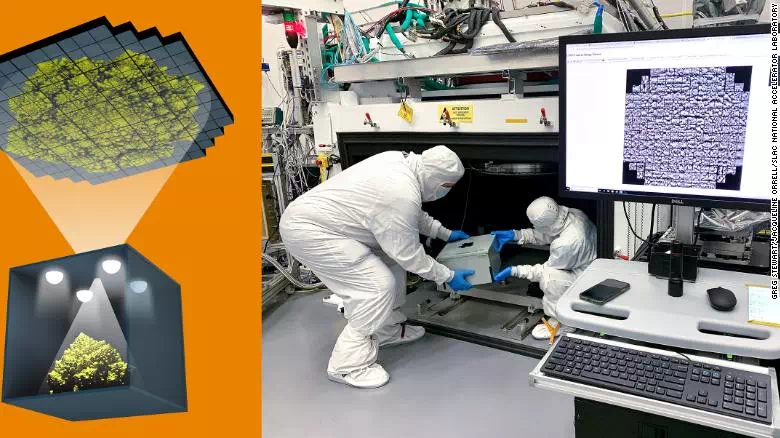
Researchers at the Department of Energy's SLAC National Accelerator Laboratory have developed camera powerful enough to capture world's first 3,200MP photographs utilizing a picture sensor exhibit that will end up being the core of the world's biggest advanced camera. While higher res photographs have been sewed together previously, these are the biggest single-outline advanced photos ever caught.
The sensor exhibit behind this accomplishment ought to be natural to PetaPixel perusers. Comprised of 189 16MP CCD sensors that have been organized together into a tiled mosaic, the cluster will turn into the center of the LSST (AKA the "world's biggest computerized camera") that will in the end live and work at the Vera C. Rubin Observatory in Chile.
A cutting-edge imaging instrument worked to test the universe's greatest puzzles has been gotten through a training run and sorted out the biggest photographs at any point taken therefore. The central plane for what will be the world's biggest advanced camera was utilized to snap the first since forever 3,200-megapixel pictures, with the group presently getting ready to introduce this sensor exhibit into a super delicate telescope fit for spotting objects 100 million times dimmer than what can be seen with the unaided eye.
The world's biggest and most impressive advanced camera has been in progress at the US Department of Energy's SLAC National Accelerator Laboratory since 2015. The gadget is the highlight of the Vera C. Rubin Observatory as of now under development in Chile, which will go through 10 years assembling the most stretched out, quickest and most profound perspectives on the night sky at any point taken. This activity is known as the Legacy Survey of Space and Time (LSST), and the camera at its core flaunts some reasonably advanced equipment. The central plane was gathered back in January and highlights 189 individual imaging sensors that record 16 megapixels each.
Where a full-outline buyer camera may include an imaging sensor estimating 1.4 inches (3.5 cm) over, this central plane stretches to multiple feet (61 cm) in width. This is huge enough for it to catch a bit of the sky the size of 40 full moons, and spot cosmic articles with such affectability it is similar to a human seeing a flame from a large number of miles away.
No, genuinely. Picked for its profoundly definite surface, the subject of the world's first 3,200MP computerized photo was a head of Romanesco, a sort of broccoli that you've presumably observed (however perhaps never really bought) at the supermarket.
To put this central plane through a lot of hardship, the group previously needed to put it inside a cryostat to chill the sensors off to - 150 °F (- 101.1 °C) to arrive at its necessary working temperature. It was then used to picture a head of broccoli, picked for its unpredictable detail, alongside pictures of the group and of Vera C. Rubin, the researcher after which the observatory is named. So enormous are these pictures that it would take 378 4K TV screens to introduce one of them in full size, while the goal is sufficiently high that you could recognize a golf ball from around 15 miles (24 km) away.
"This accomplishment is among the most critical of the whole Rubin Observatory Project," says SLAC's Steven Kahn, head of the observatory. "The finish of the LSST Camera central plane and its fruitful tests is an enormous triumph by the camera group that will empower Rubin Observatory to convey cutting edge cosmic science."
From here, the group will start attempting to incorporate the central plane into the camera body, alongside its focal points, a screen and a channel framework to watch the night sky in fluctuating hues. The completed item will be around the size of a SUV, with plans to start last testing halfway through 2021.
"Approaching fruition of the camera is energizing, and we're glad for assuming such a focal part in building this key segment of Rubin Observatory," says JoAnne Hewett, SLAC's main examination official and partner lab chief for basic material science. "It's an achievement that presents to us a major bit nearer to investigating central inquiries regarding the universe in manners we haven't had the option to previously."
Coming Soon...!
Comments (0)